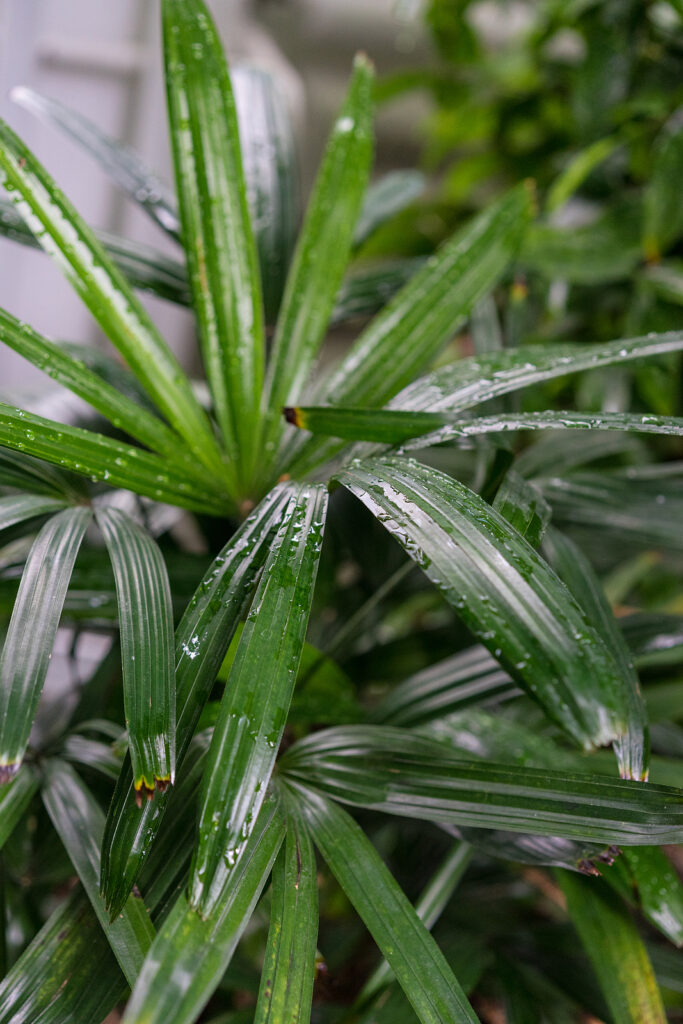Rhapis–commonly called lady palm–is a reedlike palm whose stems appear in clusters. Rhapis has fronds that are fan-shaped and divided lengthwise into narrow green leaves that can be blunt-edged or pointed. The shiny bright green fronds are divided into five to eight leaves up to 9 inches long and 2 inches wide. Indoors.
Rhapis grows best in bright filtered light indoors. Outdoors in frost-free tropical regions, it should be grown in dappled shade. Rhapis is a small palm; it grows 5 to 15 feet (1.5-5m) tall and wide.
Rhapis is a genus of 12 species of small, cluster-stemmed palms. Rhapis is native to shady tropical and subtropical forests from South China to Southeast Asia.
Get to know Rhapis
- Plant type: Palm
- Growing zones and range: Zones 14-1
- Hardiness: Tender
- Height and width: 5 to 15 feet (1.5-5m) tall and wide.
- Foliage: Bamboo-like stems; long stalked, deeply lobed, lustrous, dark green leaves 8 to 12 inches
- Flowers: Bowl-shaped, 3-petal flowers in short panicles between leaves
- Bloom time: Summer
- Uses: Shady border plant in tropical regions, houseplant
- Common name: Lady palm, miniature fan palm
- Botanical name: Rhapis
- Family name: Arecaceae
- Origin: Tropical and subtropical forests from South China to Southeast Asia

Where to plant Rhapis
- Light outdoors: Grow Rahpis outdoors in dappled shade.
- Light indoors: Grow Rhapis indoors in bright filtered light.
- Soil outdoors: Plant Rhapis outdoors in moderately fertile, well-drained soil.
- Soil indoors: Pot Rhapis in an all-purpose potting mix or a peat-based soilless mix.
When to plant Rhapis
- Set container-grown Rhapis outdoors in tropical and subtropical regions any time of the year.
Planting and spacing Rhapis
- Space Rhapis 5 to 15 feet (1.5-5m) apart.
How to water and feed Rhapis
- Water Rhapis thoroughly; allow trhe soil to dry moderately between waterings.
- Fertilize Rhapis once a month during spring and summer with an all-purpose fertilizer.
Rhapis care
- Keep Rhapis out of drying winds.
Rhapis pests and diseases
- Rhapis is susceptible to attack by mealybugs, scale insects, and spider mites.
Rhapis propagation
- Rhapis can be propagated by division or from offsets. Repot offsets in a peat-based soilless mix.
Rhapis varieties to grow
- Rhapis excelsa, lady palm, miniature fan palm. Small, clump-forming palm with slender erect bamboo-like stems; long stalked, deeply lobed, lustrous, dark green leaves 8 to 12 inches long; grows 5 to 15 feet (1.5-5m) tall and wide.



